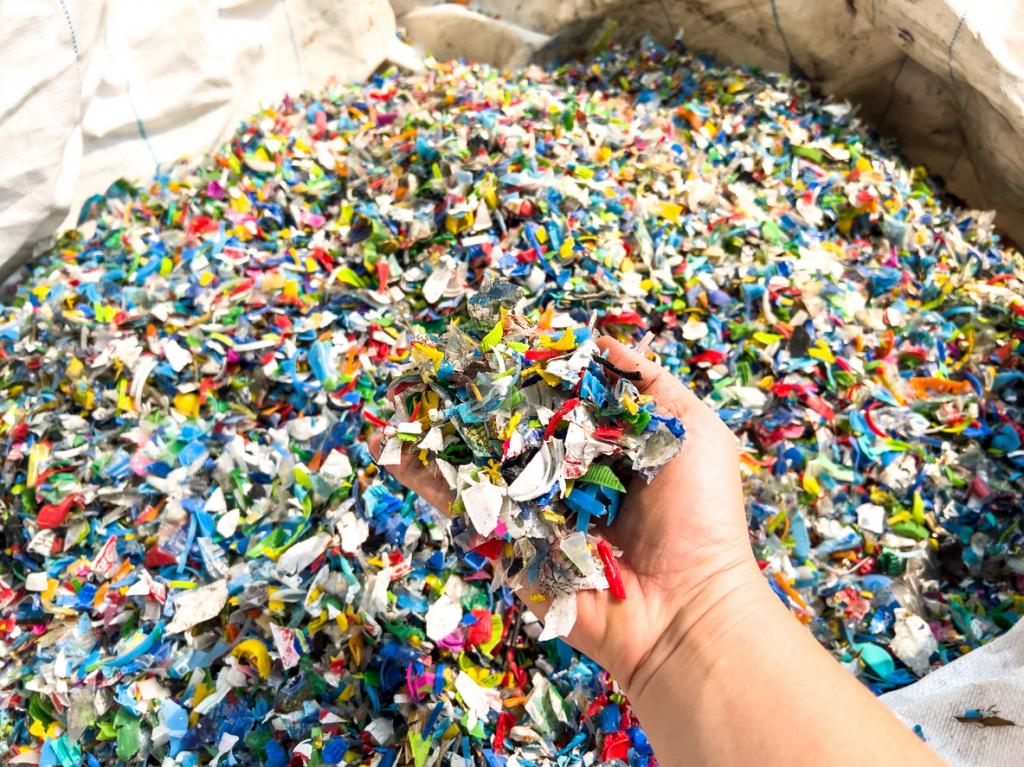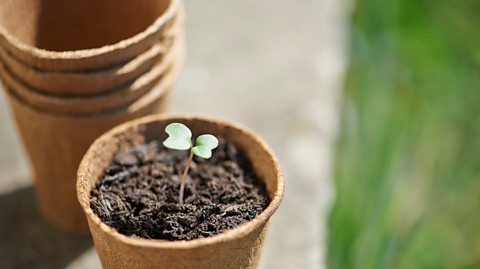Five amazing biodegradable inventions that could potentially replace plastic
4 min read
We hear the word ‘biodegradable’ a lot – from teabags to toiletries, many products are starting to go zero-waste to reduce plastic.
But what does it actually mean? When something is ‘biodegradable’, it can be decomposed by bacteria or other living organisms. Everything breaks down eventually, but the problem with plastics is that this process can take up to 1000 years. They’re more likely to break apart into micro-pieces which can cause harm to animal and plant life. Mismanaged plastics can also release harmful chemicals into the surrounding soil or water sources which can have a dangerous effect on ecosystems.
Luckily, there are many efforts being put towards creating more sustainable products and materials which take a fraction of the time to break down. Here are five amazing biodegradable inventions that can potentially replace plastic.
Coconut leather

Coconut fibres can be used for a number of things, including bags, scrubbing brushes and plant pots
With fashion brands becoming more eco-conscious and the very first Vegan Fashion Week in 2019, you may be looking into a green wardrobe yourself. So naturally you want an animal-friendly alternative to a shiny new leather jacket – but the problem with faux leather is, more often than not, it’s made of plastic.
There are many leather alternatives in the works, but most of them still require a plastic coating to be as durable as leather. Coconuts have many different uses, but a recent breakthrough allowed the fibres to be compacted into a leather-like product.
It lasts years, but won’t harm the environment once you throw it out. Improvements are being made to the flexibility of the material, so you can sport a coconut leather bag, but may have to wait a bit for your stylish shoes and jacket!
Six pack rings
We’ve all seen videos and images of injured sea life caught up in plastic six-pack rings. Not only can animals get caught in them, but they can flake into microplastics which can be dangerous to ingest, and reach our own stomachs in the food chain.
A company called E6PR (Eco Six-Pack Ring) created rings for six-pack cans that are made from grains like wheat and barley, which will naturally degrade when thrown away. There are even applicators which can make rings for up to 1200 cans a minute, so hopefully this means the end of plastic rings for cans and bottles, as well as other plastic ties.
Plastic-free gum
That’s right – most chewing gum contains plastic, as well as rubbers and waxes which don’t biodegrade easily. Polymers can’t be digested, so if you accidentally swallow your gum, it’ll pass through you and end up in your toilet. Don’t worry, it won’t do you any harm – but it won’t break down easily once it’s outdoors either.
It makes sense that plant-based gum is making a comeback (or should that be gum-back?) in these plastic-conscious times. Most plant-based gums are harvested from chicle, the sap of the sapodilla tree, which has been chewed on for hundreds of years. The invention of gum tabs and strips allows you to have a less messy and more flavourful experience, so check the label and chew in peace (but not in class!).

Sol-gel
A single-use coffee cup might be made of paper, but more often than not it will be coated with plastic. This is the case for most fibre-based products, most notably cardboard food packaging.
This makes recycling them harder and decomposition harder still. Sol-gel is a paper-coating technology extracted from sand, with the purpose of water-proofing materials. It is biodegradable, compostable and 100% plastic free.
It has anti-corrosion and self-cleaning abilities, so could potentially be used to replace plastic in coating things like electrical insulators, capacitors, and other electric appliances such as TVs and fridges.
Edible water bottle
Biodegradable and, in some cases, edible food packaging is nothing new. But what if you could eat your non-plastic water bottle?
Several labs have developed a type of flexible, transparent sachet designed to hold liquids. They’re most commonly made of seaweed extract and a very safe amount of chloride. This means they can be composted or eaten, leaving behind zero waste.
In 2019 the London Marathon replaced over 200,000 plastic bottles with edible seaweed pods. These innovative pods were filled with a sports drink and handed out to runners.
Now the goal for edible water bottles is to develop a machine to make the sachets for as little money as possible to compete with plastic bottles. This could mean a lot for the future of packaging liquids, including for sauces, laundry detergent and even cosmetics.





